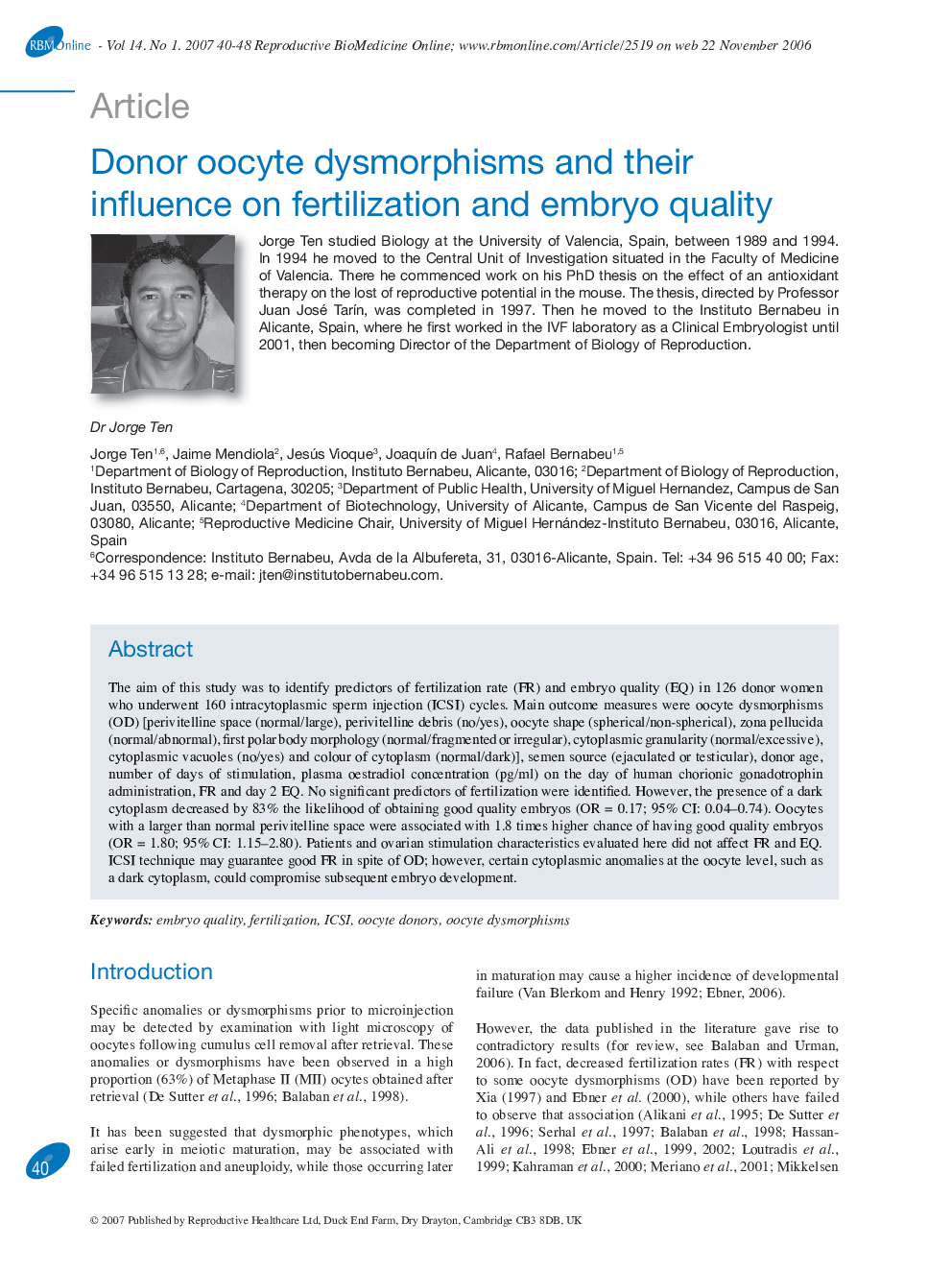| Article ID | Journal | Published Year | Pages | File Type |
|---|---|---|---|---|
| 3973249 | Reproductive BioMedicine Online | 2007 | 9 Pages |
The aim of this study was to identify predictors of fertilization rate (FR) and embryo quality (EQ) in 126 donor women who underwent 160 intracytoplasmic sperm injection (ICSI) cycles. Main outcome measures were oocyte dysmorphisms (OD) [perivitelline space (normal/large), perivitelline debris (no/yes), oocyte shape (spherical/non-spherical), zona pellucida (normal/abnormal), first polar body morphology (normal/fragmented or irregular), cytoplasmic granularity (normal/excessive), cytoplasmic vacuoles (no/yes) and colour of cytoplasm (normal/dark)], semen source (ejaculated or testicular), donor age, number of days of stimulation, plasma oestradiol concentration (pg/ml) on the day of human chorionic gonadotrophin administration, FR and day 2 EQ. No significant predictors of fertilization were identified. However, the presence of a dark cytoplasm decreased by 83% the likelihood of obtaining good quality embryos (OR = 0.17; 95% CI: 0.04–0.74). Oocytes with a larger than normal perivitelline space were associated with 1.8 times higher chance of having good quality embryos (OR = 1.80; 95% CI: 1.15–2.80). Patients and ovarian stimulation characteristics evaluated here did not affect FR and EQ. ICSI technique may guarantee good FR in spite of OD; however, certain cytoplasmic anomalies at the oocyte level, such as a dark cytoplasm, could compromise subsequent embryo development.
